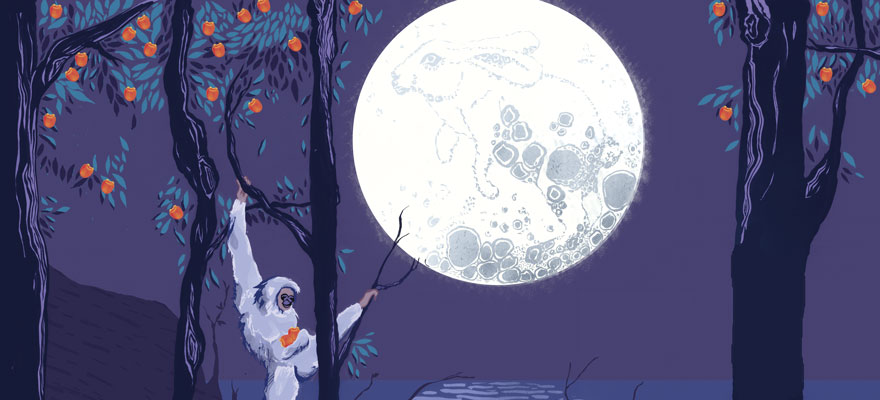Home > Highlighting JAPAN > Highlighting Japan September 2013 >Mount Fuji, World Heritage Site
Highlighting JAPAN
Student's Corner
Otsukimi
The rabbit in the moon

The moon can be viewed in many ways. In some countries, people see a man in the moon, whereas in others, they see handprints, or a tree. But in Japan, many people think of a rabbit when looking at the moon. Do you know why? Generations of Japanese children have learnt about the origins of the moon through this traditional folk tale.
Once, long ago, there were three friends: Fox, Monkey, and Rabbit. One day, while out on walk they came across a frail old man in the road. The man was sick and weak, and the friends felt sorry for him. They decided to offer help and went in search of food.
The nimble Monkey found fruit and vegetables in the forest and brought back his bounty. The clever Fox caught some fish in the river and came back proudly. They made a fire to stay warm and prepare the food. Meanwhile, Rabbit was not able to find anything except grass to contribute and came back empty-handed and ashamed. In a desperate effort to help the old man, she threw herself on the fire, offering herself as food.
Right at that moment, the old man transformed into his true self, a god who came down from the heavens to test the friends. He quickly pulled Rabbit from the burning fire and, as a reward for her help, took her to the moon to live with him. You can see her there now where, some people say, she can be seen making mochi (rice cakes).
Today, moon-watching or otsukimi is still a tradition in Japan. People say that the most beautiful view of all is the harvest moon in fall when the moon looks bigger and more reddish than any other time. When people used the old lunar calendar, the moon-watching ceremony was held on the 15th day of the eighth month. Nowadays, we use a different calendar, but we still use the name "jūgoya," (the night of the 15th) to refer to the moon-viewing date. This year the harvest moon was on September 19th.
Most people enjoy moon watching at home. Families make dango "mochi balls" from rice flour and pile them in a pyramid shape on a raised plate. As a special offering to the moon, an altar is prepared with pampas grass (called susuki) and arranged with fall fruits and vegetables, such as persimmons and chestnuts. After that, they look at the lovely full moon while eating dango and maybe singing a song such as:

Why not try your own moon viewing ceremony? Make some dango, decorate with fall fruit, and write some poetry to celebrate the beautiful fall full moon.
© 2009 Cabinet Office, Government of Japan






